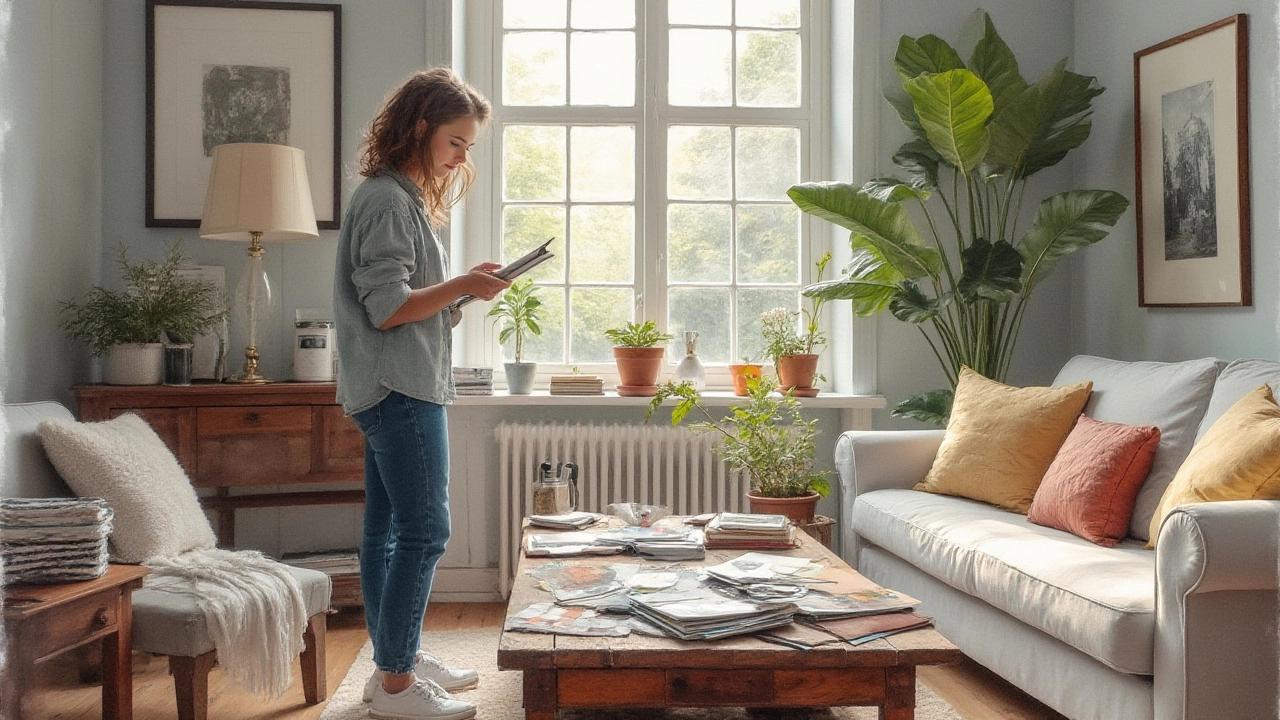Self‑Taught Interior Designer: Your Practical Guide
If you love rooms, colour, and how spaces feel, you don’t need a university to start designing. Thousands of designers began by watching videos, reading blogs, and playing with their own homes. This guide gives you simple steps to build skills, create a strong portfolio, and turn a hobby into a paying gig.
Build Your Design Skills Without a Degree
Start with free resources. YouTube channels that break down colour theory, furniture layout, and lighting are gold. Pair a video with a quick sketch – draw a room, add a sofa, test a rug size. The more you practice, the faster you learn what works.
Next, pick a few focused online courses. Look for short modules on topics like "scatter cushion rules" or "small bathroom storage" – the kind of specific advice that shows up in our blog posts. A 2‑hour lesson on cushion placement can instantly upgrade a sofa’s look.
Read books that focus on practical projects. Titles that walk you through a bathroom makeover or a living‑room refresh give step‑by‑step checklists you can copy. Keep a digital mood board on Pinterest; add images, note colour combos, and experiment without buying anything.
Showcase Your Work and Get Clients
Your portfolio is your resume. Photograph every room you redesign, even a single corner. Use natural light, shoot from a low angle, and show before‑and‑after shots side by side. Upload the images to a simple website or a free portfolio site.
Social media works like a word‑of‑mouth engine. Post a quick tip – for example, how to arrange throw pillows using the "three‑plus‑one" rule from our scatter cushion guide – and tag it with #SelfTaughtDesigner. Engage with comments, answer questions, and you’ll start building a community.
Don’t overlook local networking. Offer a free design consult to a friend’s cafe or a neighbour’s bedroom. Real projects give you proof and referrals. You can also join online forums where homeowners ask for help; a helpful answer can become your first paid job.
Finally, set clear pricing. Start with a flat‑fee for a room redesign, then add extras like furniture sourcing or colour palettes. Being transparent builds trust and makes the hiring decision easy for clients.
Being a self‑taught interior designer is about curiosity, consistent practice, and showing what you can do. Use the tools and tips above, keep learning from articles like our "Creative Storage Solutions" or "Modern Living Room Ideas," and watch your design side‑hustle grow into a real business.
How to Become a Self-Taught Interior Designer: Real Skills, Tools, and Tips
- Gavin Whitaker
- |
- |
- 0
Discover how to become a self-taught interior designer with practical steps, useful facts, and real-world tips. Learn what matters and unlock your creative side.
View more